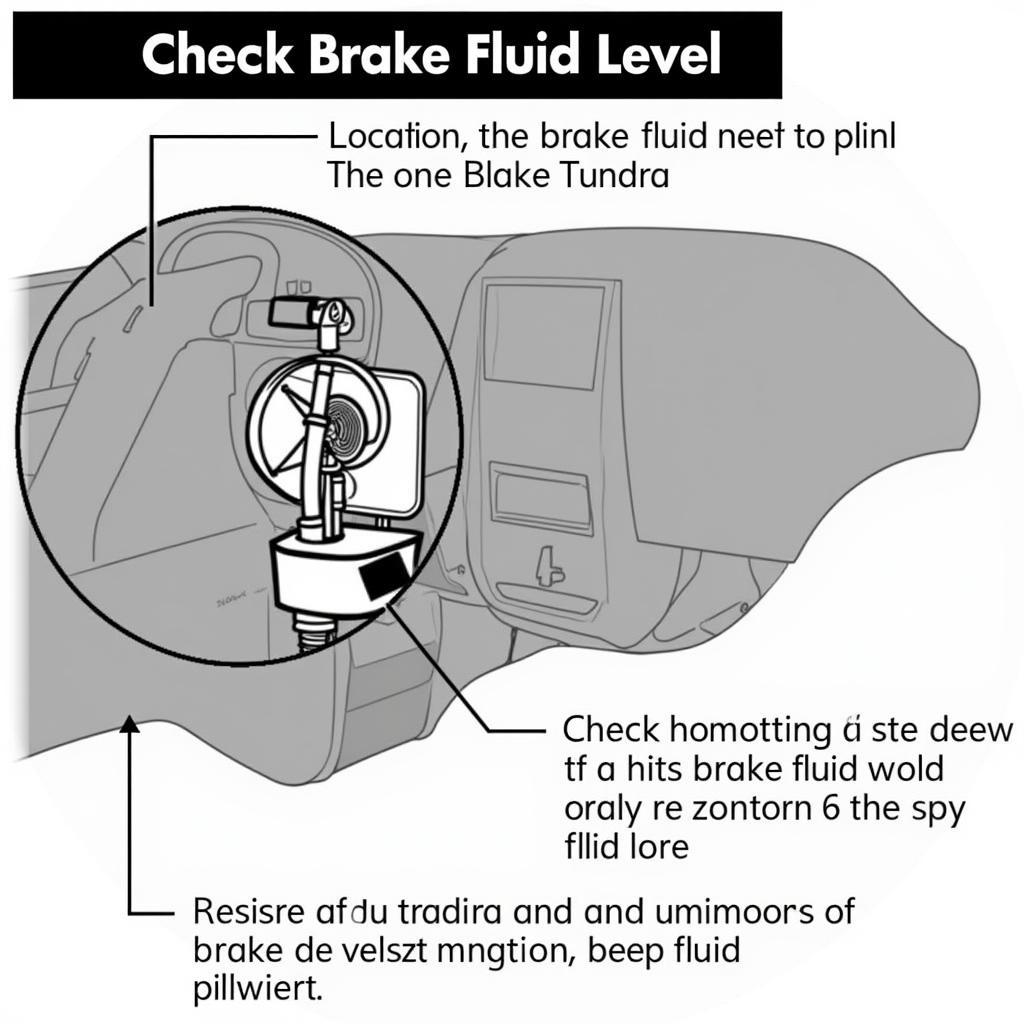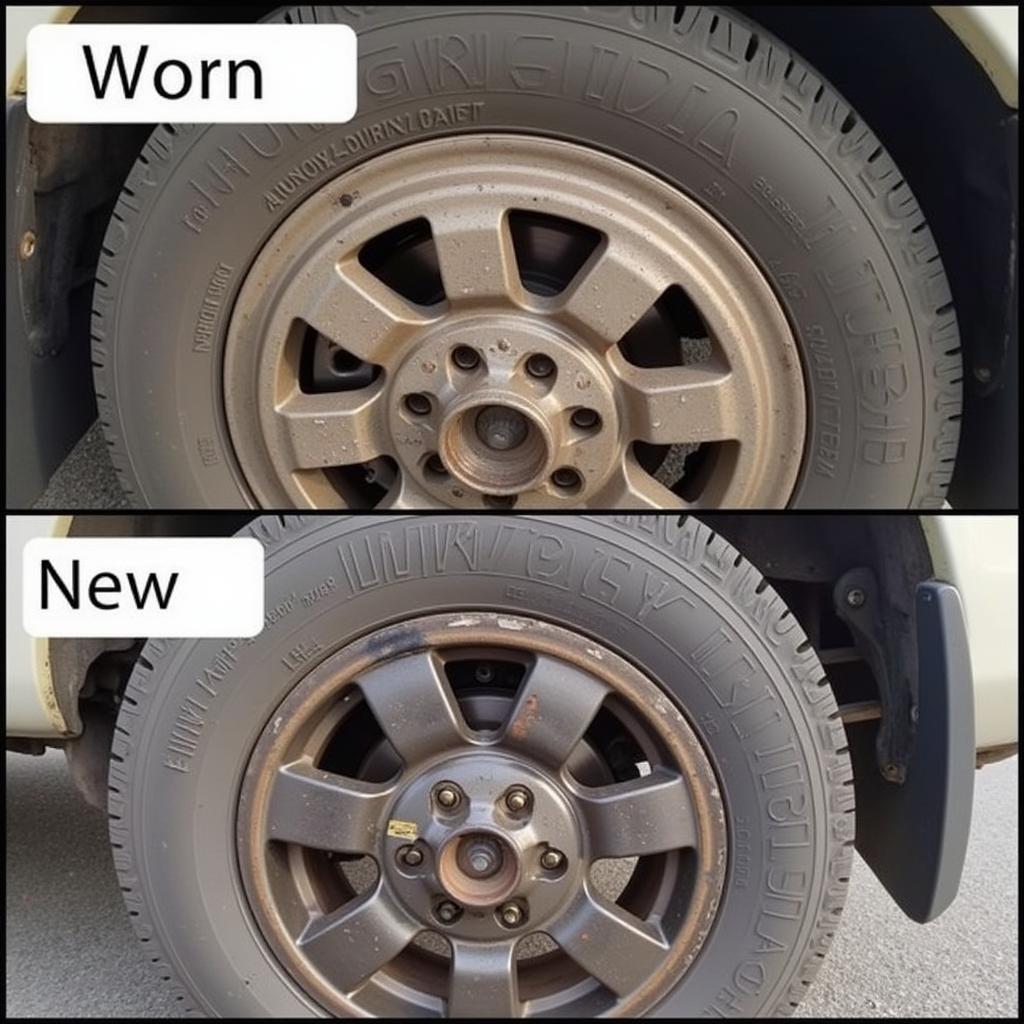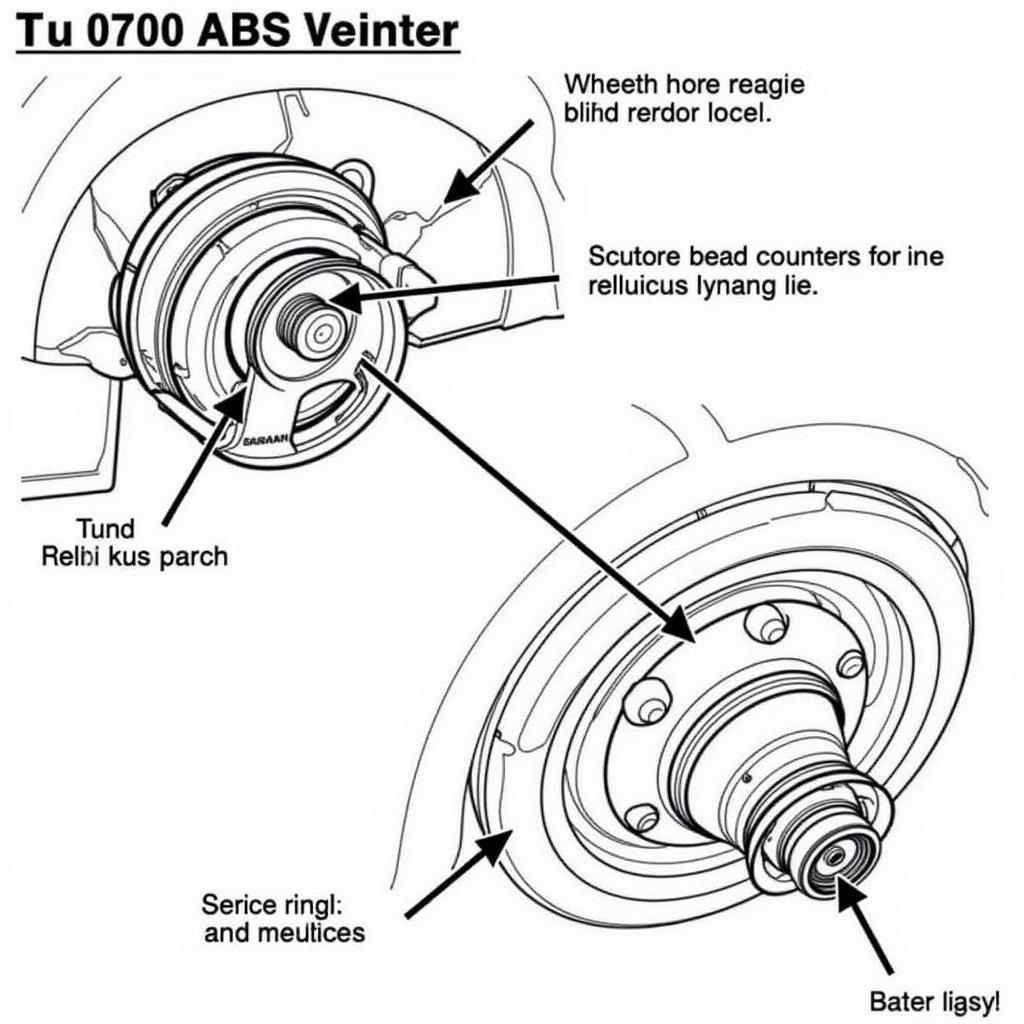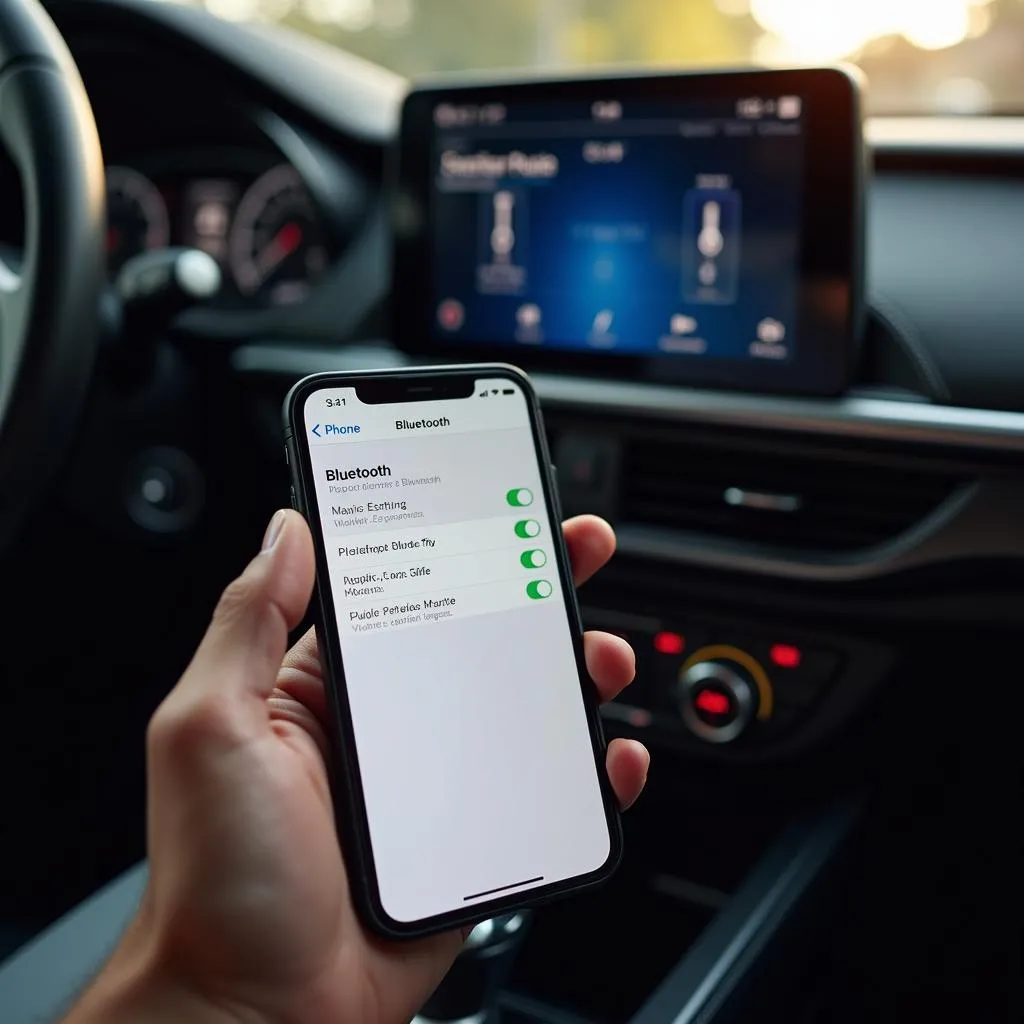The dreaded brake warning light on your 2006 Toyota Tundra can be a source of anxiety. This article provides a comprehensive guide to understanding why your 2006 Toyota Tundra brake warning light is on, offering troubleshooting tips and solutions to help you get back on the road safely. From simple checks to more complex diagnostic procedures, we’ll cover everything you need to know.
Understanding Your Tundra’s Brake System
The braking system in your 2006 Toyota Tundra is a complex network of components working together to ensure safe and reliable stopping power. It’s essential to understand the basics of this system to effectively diagnose the cause of a warning light. The system includes the master cylinder, brake lines, calipers, rotors, brake pads, and the all-important brake fluid. Any issue within these components can trigger the warning light. Regular maintenance, including brake fluid flushes and pad replacements, can prevent many problems.
Common Causes of the 2006 Toyota Tundra Brake Warning Light
Several factors can illuminate the brake warning light in your 2006 Toyota Tundra. One of the most common culprits is low brake fluid. As brake pads wear down, the brake fluid level naturally decreases. However, a sudden drop in fluid level could indicate a leak, requiring immediate attention. Another common cause is a faulty parking brake switch. If the switch malfunctions, it can trick the system into thinking the parking brake is engaged, triggering the warning light. Worn brake pads are another frequent trigger. As the pads wear thin, they activate a sensor that illuminates the warning light, signaling the need for replacement.
 2006 Toyota Tundra Low Brake Fluid Level Check
2006 Toyota Tundra Low Brake Fluid Level Check
Diagnosing the Problem: A Step-by-Step Guide
-
Check the Brake Fluid Level: Open the hood and locate the brake fluid reservoir. Check the fluid level against the minimum and maximum markings. If the level is low, add the correct type of brake fluid.
-
Inspect the Parking Brake: Ensure the parking brake is fully disengaged. Sometimes, a slightly engaged parking brake can trigger the warning light.
-
Check Brake Pad Thickness: Visually inspect the brake pads through the wheel spokes. If the pads appear thin, measure them with a caliper to determine if they need replacement.
-
Scan for Diagnostic Trouble Codes (DTCs): A professional-grade OBD-II scanner can retrieve diagnostic trouble codes from the vehicle’s computer. These codes can pinpoint the specific area of the brake system causing the issue.
 Inspecting Brake Pads on a 2006 Toyota Tundra
Inspecting Brake Pads on a 2006 Toyota Tundra
Advanced Troubleshooting and Solutions
If the basic checks don’t reveal the problem, more advanced diagnostics may be necessary. A faulty ABS sensor can sometimes trigger the brake warning light. These sensors monitor wheel speed and are crucial for the proper functioning of the Anti-lock Braking System (ABS). A professional mechanic can test these sensors and replace them if necessary. Problems within the master cylinder or brake lines can also cause the warning light. These issues typically require professional repair.
“Regular brake system inspections are crucial for maintaining safety and preventing costly repairs,” says John Davis, a certified automotive technician with over 20 years of experience. “Don’t ignore the brake warning light, as it’s often an early indicator of a potential problem.”
Remote Diagnostics and Programming
In some cases, remote diagnostics and programming can be utilized to address specific issues related to the brake warning light. Specialized software can access the vehicle’s computer remotely, allowing technicians to identify and rectify software glitches or programming errors that may be contributing to the problem. This can be a time-saving and cost-effective solution, especially for issues related to the ABS system or electronic brake control modules.
 2006 Toyota Tundra ABS Sensor Location and Function
2006 Toyota Tundra ABS Sensor Location and Function
Conclusion
Addressing the brake warning light on your 2006 Toyota Tundra is crucial for ensuring your safety and the proper functioning of your vehicle. By following the steps outlined in this guide, you can diagnose the problem and take appropriate action. Remember, if you’re unsure about any step, it’s always best to consult a qualified mechanic. Don’t ignore the 2006 Toyota Tundra brake warning light – address it promptly to avoid potential safety hazards.
FAQ
-
What is the most common cause of the brake warning light? Low brake fluid is often the most common culprit.
-
Can I drive with the brake warning light on? It’s not recommended. The light indicates a potential problem that needs immediate attention.
-
How often should I check my brake fluid? Checking your brake fluid level monthly is a good practice.
-
How much does it cost to replace brake pads? The cost varies depending on the type of brake pads and labor rates.
-
What is an ABS sensor? An ABS sensor monitors wheel speed and is essential for the proper functioning of the Anti-lock Braking System.
-
How often should I flush my brake fluid? Consult your owner’s manual for the recommended brake fluid flush interval.
-
Can a faulty parking brake switch trigger the brake warning light? Yes, a malfunctioning parking brake switch can illuminate the warning light.

